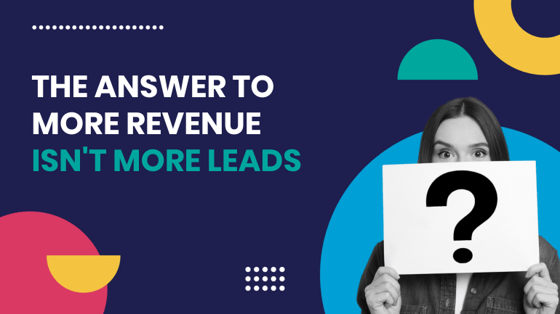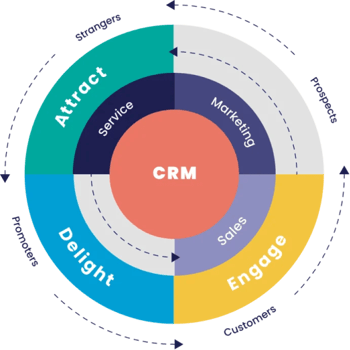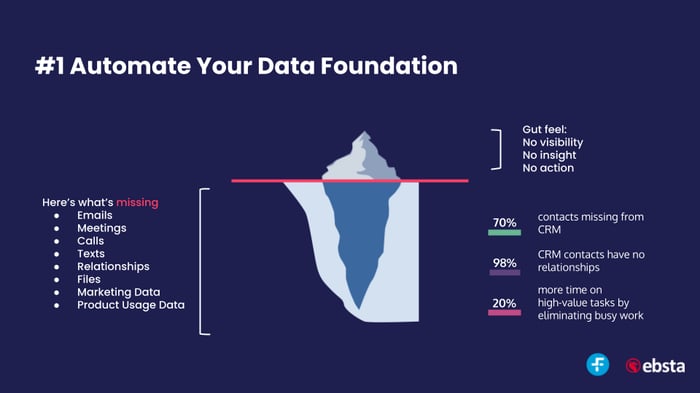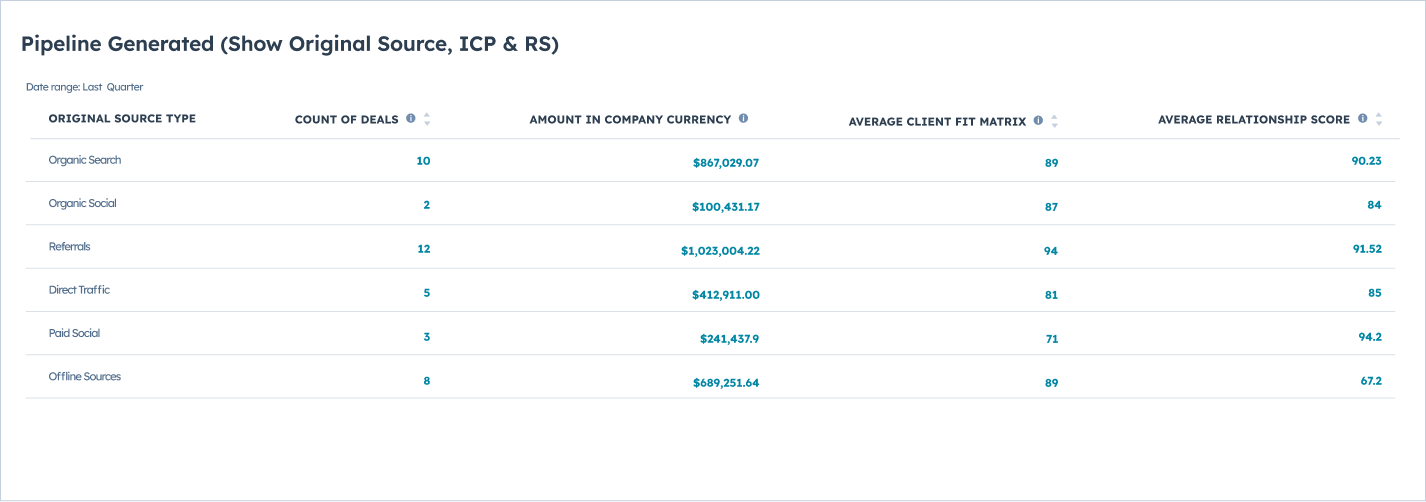


The answer to more revenue isn't more leads - Rethinking Go-To-Market




Are you ready to ditch the outdated lead generation techniques that just aren't cutting it? If you're tired of putting in all that effort and getting minimal results, I hear you loud and clear!
In fact, according to Forrester, less than 1% of individual leads end up as loyal customers. Sure, leads might give your marketing team a quick pat on the back, but they won’t provide the actionable insights you need to drive revenue for your business.
That’s why it’s time to rethink your go-to-market strategy and focus on what really works.
This blog post takes a deep dive into why leads aren’t cutting it, what’s wrong with traditional MQLs, and how you can use high-intent pages, relationship scores, and customer matrix scores (ie - RevOps Metrics) to supercharge your marketing results.
The problem with driving more lead generation
Leads should be considered a vanity metric. They give you a false sense of accomplishment by reflecting potential rather than actual results.
Sure, a high number of leads may make your marketing team look like rock stars, but they offer little context and don't contribute much to your business strategy.
What you need is a holistic approach that focuses on the entire customer journey, rather than just filling the top of the funnel. It's time to shift your focus from the funnel to the flywheel.

The Problem with MQLs
Marketing Qualified Leads (MQLs) may seem like a step in the right direction, but they come with their own set of problems. Typically, a MQL is captured a tracked through a lead score. Now, don't get wrong, lead scores can help capture intent, but should not be used alone. We'll get into relationship scores and matrix scores in a second!
When marketing's goal is to drive MQLs, you may end up tracking people who are qualified, but do not have any intention of buying. In fact, other signals that indicate purchase intention can fly under the radar. Not to mention, the misalignment caused between marketing and sales.
While marketing's primary objective is to generate more leads, sales is looking to convert these leads into paying customers. This divergence in goals often leads to frustration and conflicts between the teams, with marketing blaming sales for not being effective enough in following up with the leads, and sales criticising marketing for providing low-quality leads. Thus, it's crucial to align the goals and strategies of these two departments to create a well-coordinated effort towards driving revenue and growth.
Goodbye MQLs, Hello Opportunities
Instead of obsessing over MQLs, focus on opportunities and contributing to marketing-generated pipeline. By shifting your perspective, you align marketing and sales around a common goal. This not only fosters collaboration but also holds both teams accountable.
To focus on opportunities, you can leverage sophisticated HubSpot workflows that nurture contacts with high-value content. This approach ensures that your marketing efforts are targeted, personalised, and effective in moving leads through the customer journey.
Unlocking Intent with Ebsta
Did you know that up to 70% of valuable customer data could be missing from your CRM? That's where Ebsta comes in. Ebsta captures conversations happening outside your CRM, be it in emails, phone calls, social media, and more. When multiple individuals from a company are engaged in conversations, it indicates a strong intent to purchase. Your sales team is more likely to view these leads as high-quality and deserving of attention. By integrating Ebsta with HubSpot, you can unlock valuable insights and enhance your go-to-market strategy.

Watch the on-demand webinar: 7 Steps to Achieve Predictable, Efficient Revenue Growth
Identifying High-Intent Pages
Certain pages on your website reflect higher buyer intent. Pricing pages, case studies, and contact pages are prime examples. When a contact lands on these pages, it's a clear signal that they are ready for a sales conversation. By tracking these interactions, you can promptly notify your sales team (using Workflows and notifications) and ensure timely follow-ups. Nurturing contacts towards these high-intent pages further reinforces their readiness to engage with your sales team. Don't miss out on these opportunities to boost your revenue.
Hold Both Teams Accountable with Relationship Scores and Customer Matrix Scores
Relationship scores and customer matrix scores are powerful scores you can build in HubSpot that can transform your go-to-market strategy. A relationship score measures the number of interactions with multiple stakeholders at a company, allowing you to gauge the strength of your relationships. By combining Ebsta data with HubSpot, you can easily build relationship scores and gain valuable insights into your customers.
On the other hand, customer matrix scores help you evaluate how closely a lead aligns with your ideal customer profile (ICP). By tracking these scores across your marketing-generated pipeline, you can assess whether your sales team has dedicated the necessary time and energy to convert leads into paying customers. This data empowers both marketing and sales teams to optimise their efforts and focus on the leads that have the highest potential for success.

Marketing and Sales need to involve Customer Success in the conversation
When formulating your initial sales and marketing strategy, it's crucial to involve the customer success (CS) team. Remember, acquiring new leads costs more than retaining existing customers.
By collaborating with CS from the start, you can position your company better to attract and retain high-value customers who align with your ideal customer profile and have a higher customer lifetime value (CLV).
Including CS in the conversation ensures that your go-to-market strategy is not just focused on lead generation, but also on creating long-term customer relationships that drive sustainable revenue growth.
The #1 KPI for Marketers is CLV
In the world of marketing, customer lifetime value (CLV) should be your ultimate north star metric. CLV takes into account the long-term value that a customer brings to your business. It considers not only the initial purchase but also factors in customer retention, repeat purchases, and upsells or cross-sells over their lifetime as a customer. By prioritising CLV, you shift your focus from short-term gains to building strong customer relationships and maximizing the value they bring to your business.
It's time to break free from the notion that more leads automatically lead to more revenue. In reality, leads are just the beginning of a much larger journey. By embracing a go-to-market strategy that focuses on opportunities, intent-driven actions, relationship scores, customer matrix scores, and customer success, you can unlock the true potential of your marketing and sales efforts.









